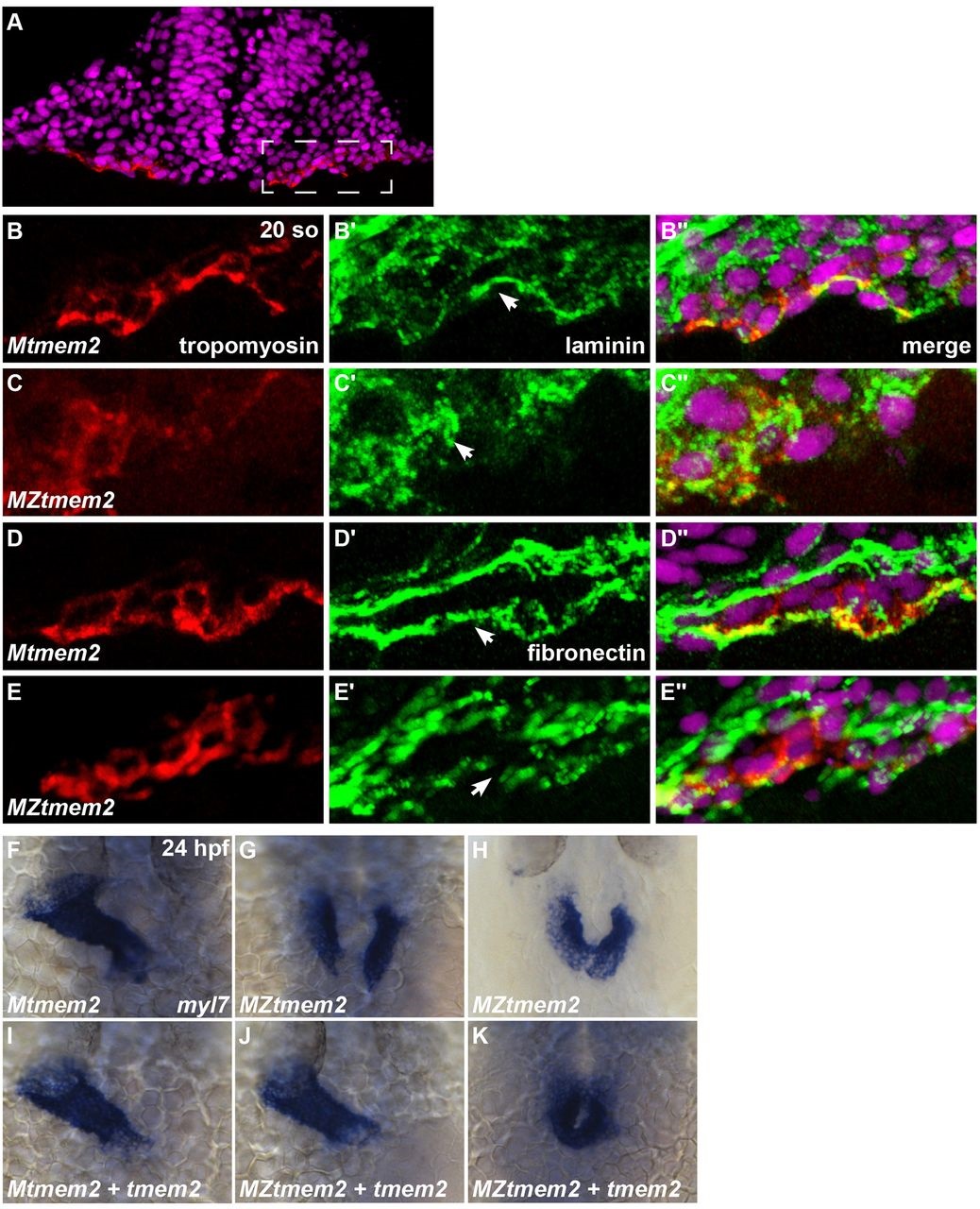Fig. 3
ECM disorganization accompanies cardia bifida in MZtmem2 mutants. (A-E) Immunofluorescence illustrates laminin (green; B′,C′) and fibronectin (green, D′,E′) localization near the myocardium (marked by tropomyosin in red); transverse sections, dorsal up, at 20 so, with DAPI (magenta). Dashed rectangle in A indicates the right cardiac primordium, closer views of which are shown in B-E. (B) During cardiac fusion, laminin deposition is normally evident on the basal side of the myocardium (arrowhead, B′) (Arrington and Yost, 2009). (C) In MZtmem2 mutants, laminin organization appears severely compromised (arrowhead, C′) and a discrete basal layer does not form. (D,E) Fibronectin fibrils normally underlie the myocardium during cardiac fusion (arrowhead, D′) (Trinh and Stainier, 2004), but fibronectin deposition appears irregular and disorganized in MZtmem2 mutants (arrowhead, E′). (F-K) Expression of myl7 at 24hpf in Mtmem2 (F,I) and MZtmem2 (G,H,J,K) siblings; dorsal views, rostral up. By 24hpf, the heart tube assembles normally in Mtmem2 siblings (F), but MZtmem2 mutants typically exhibit cardia bifida (G). Occasionally, MZtmem2 mutants display partial cardiac fusion (H, Table S2). Injection of tmem2 mRNA rescues cardiac fusion (K) in MZtmem2 mutants and can even restore heart tube formation (J, Table S2), but does not affect heart formation in Mtmem2 siblings (I, Table S2).

